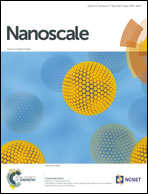Plasmonic Fano resonances in nanohole quadrumers for ultra-sensitive refractive index sensing
Abstract
Plasmonic Fano resonances arising from electromagnetic interactions in metallic nanostructures exhibit spectral characteristics analogous to those from the electron waves in oligomer molecules. Though a great deal of research interest has been attracted to study the optical properties and explore the associated applications of metallic nanoparticle oligomers, the plasmonic response of their complementary structures – nanohole clusters – remains largely unexplored. Here we show numerically by a full-wave finite element method that a nanohole quadrumer can sustain two Fano resonances when the incident electric field is oriented along the long-axis of the quadrumer system. The underlying physical mechanisms responsible for the Fano resonance formation are revealed explicitly by spectrally deconstructing the Fano lineshape, spatially decomposing the structure configuration and mapping the electric field profile and charge distribution, which collectively demonstrate a strong mode coupling between either two antiparallel dipolar modes or dipole–quadruple modes in the nanohole quadrumer. We further show that the spectral profile of the Fano resonance including the resonance linewidth and spectral contrast can be engineered flexibly by adjusting the geometrical parameters of the nanohole cluster, including the nanohole diameter, film thickness and interhole distance. With an optimized and realistic geometrical configuration, the nanohole quadrumer system exhibits an overall sensing figure of merit up to 14.25, far surpassing the value reported for conventional nanoparticle oligomers.


 Please wait while we load your content...
Please wait while we load your content...